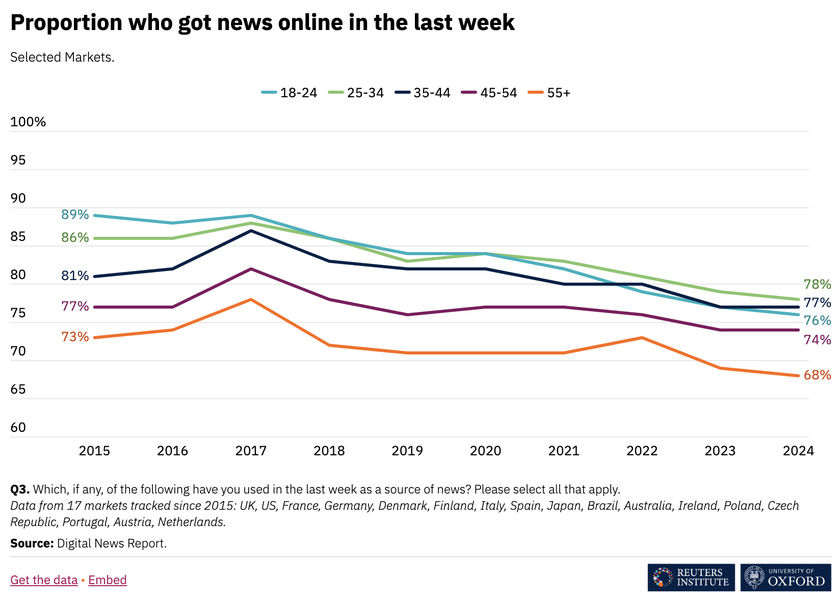Interesting.
Is the nuance we’re looking for here that readers are exhausted from a lack of user-centricity at the content planning stage?
Maybe you have been too focused on ‘Update me’ stories.
Maybe you’re not explaining things to readers.
Or, maybe you are explaining things, but not making it obvious that you’re explaining things.
In short? You might not be able to control WHAT you cover, but you absolutely can focus more on HOW you cover it.
As Dmitry says, the common thread with those three problems is that there’s not enough user-centric or character-centricity.
The encouraging thing about this is that this isn’t just a theory. Dmitry’s helped enough newsrooms make the switch to user needs focused planning to know that it can be transformative.
“I see the average read depth or average read number of reads per section go up month after month when editors start applying user needs model to their stories.”
Here’s what Dmitry says you should do about it
When you’re brainstorming an idea about how to cover a particular story, and if it’s not a breaking news situation, I would always recommend that if someone brings you three versions of ‘Educate me’ headline they’re going to write, ask them to bring the 4th 5th and 6th because those extra three ideas may be fresh takes, and not done by anyone already.
-DS
Here’s what Stefan says you should do about it
And, as we have a fair amount of in-house expertise on the matter, we also asked our editor and user needs expert, Stefan ten Teije for his top tips as well.
- Bring the news into the reader’s world.
Maybe a product might become more expensive or less available in your country because of a war far away. Use that angle to tell the story of that conflict. Perhaps humanitarian aid is slow to get underway. Find people in your own country who are actively involved in the response.
This isn’t a case of ‘how can I make this about me’, but the user needs methodology can help you to find a more locally relevant entry point for your own community.
2. Don’t assume there’s too much prior knowledge.
One of the common pitfalls for journalists is assuming that the audience has more background knowledge and understanding than it actually does. And, unfortunately, this is true even if you’ve been reporting on a subject for years. People are busy living their own lives, and their knowledge of current affairs is generally at a completely different level to you as a journalist. Start by inviting readers to ask questions, and then try to find original ways to answer them. “Why don’t we put solar panels in the Sahara?” could be a great opening question for a piece on the role of desert landscapes in the climate system.
3. Analyse the read depth of your stories.
Not a surprising tip coming from someone who works at smartocto, perhaps, but as a journalist, you really should try to learn from how readers engage with your work. Where do they drop off? Why might they disengage at that point? You have the ability to think critically, so apply that same mindset when analysing the data behind your own stories.




